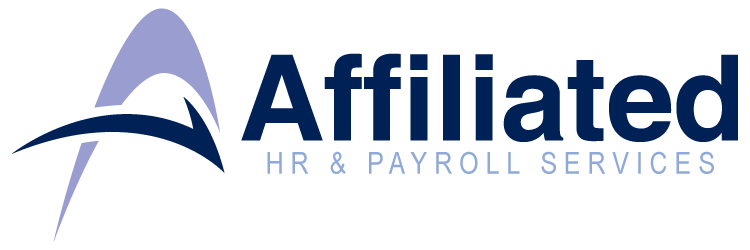
by Afilliated HR & Payroll | Aug 31, 2023 | Alert
On August 23, 2023, the IRS announced that the Affordable Care Act (ACA) affordability threshold will be 8.39%, reduced from 9.12% in 2023, for plan years beginning in calendar year 2024 (after December 31, 2023). Under the ACA’s Employer Shared Responsibility provision (play or pay), large employers (those with an average of 50 full-time employees—including full-time equivalent employees—during the prior year) must either:
- Offer most full-time employees and their children minimum essential, minimum value coverage that is affordable at the employee-only level of coverage; or
- Make an employer shared responsibility payment to the IRS if at least one of their full-time employees purchases coverage on a Health Insurance Marketplace and receives a premium tax credit because their employer did not offer qualifying coverage.
Under the new threshold, to be affordable for the 2024 plan year, the employee’s required contribution to the plan cannot be more than 8.39% of their income.
Read more about affordability and minimum value on the IRS’s Questions and Answers on Employer Shared Responsibility Provisions Under the Affordable Care Act page.
IRS Revenue Procedure 2023-29 will be published in Internal Revenue Bulletin 2023-37 on September 11, 2023.

by Afilliated HR & Payroll | Aug 25, 2023 | Alert
On July 26, 2023, the U.S. Equal Employment Opportunity Commission (EEOC) updated its Visual Disabilities in the Workplace and the Americans with Disabilities Act guide that explains how the Americans with Disabilities Act (ADA) applies to job applicants and employees with visual disabilities. It outlines when an employer may ask an applicant or employee questions about their vision, how an employer should treat voluntary disclosures about visual disabilities, and what types of reasonable accommodations those with visual disabilities may need in the workplace.
The updated guide also:
- Highlights new technologies for reasonable accommodation and how using artificial intelligence and algorithms to make employment decisions can impact individuals with visual disabilities;
- Addresses how an employer should handle safety concerns about applicants and employees with visual disabilities;
- Addresses how an employer can ensure that no employee is harassed because of a visual disability; and
- Discusses harassment and retaliation.
The EEOC’s disability discrimination landing page provides more information about disability discrimination, and the Job Accommodation Network (AskJAN) is a resource for workplace accommodations.

by Afilliated HR & Payroll | Aug 3, 2023 | Career Planning, Learning & Development, Performance Management
How do we know when an employee is ready for a leadership role?
It’s good you’re thinking about this. Promotions into leadership too often come with little discussion about how the leadership role will be different from the current role or whether the employee has the interest or skill set to be an effective leader.
Fortunately, there are indicators that someone is likely ready for a leadership role. These include (among other traits) their ability to communicate effectively, inspire and motivate others, resolve conflicts while minimizing drama, adapt to change, and take accountability for the work of their team.
If there’s an employee you’d like to promote, but they haven’t expressed an interest in a leadership role, schedule a meeting with them to talk about the idea. Share why you feel they are ready for the role and what it means to be a leader within your organization. Ask about their career goals and how they would like to advance within the organization. Let the employee know how you can support them with these goals, whether or not they move into a leadership track.
If the employee is interested in leadership, provide them a clear picture of the responsibilities and the training and guidance they’ll receive as they move into the new role. Most employees who are new to leadership will need extra support as they transition into a position of greater responsibility.
This Q&A does not constitute legal advice and does not address state or local law.
Content courtesy of the HR Support Center – https://affiliatedpayroll.myhrsupportcenter.com

by Afilliated HR & Payroll | Jul 17, 2023 | Alert, Benefits & Compensation
The IRS has announced that the amount individuals can contribute to their 401(k) plans in 2023 has increased to $22,500, up from $20,500 for 2022. This also applies to 403(b), most 457 plans, and the federal government’s Thrift Savings Plan.
Also increasing is the catch-up contribution limit for employees aged 50 and over who participate in the above plans. This limit has increased to $7,500, up from $6,500. Therefore, participants in 401(k), 403(b), most 457 plans, and the federal government’s Thrift Savings Plan who are 50 and older can contribute up to $30,000, starting in 2023.
The amount individuals can contribute to their SIMPLE retirement accounts is increased to $15,500, up from $14,000.The catch-up contribution limit for employees aged 50 and over who participate in SIMPLE plans is increased to $3,500, up from $3,000.
IRAs are also going up. The limit on annual contributions to an IRA increased to $6,500, up from $6,000. The IRA catch‑up contribution limit for individuals aged 50 and over is not subject to an annual cost‑of‑living adjustment and remains $1,000.
Phase-out ranges adjusted
The IRS has also reminded taxpayers that they can deduct contributions to a traditional IRA only if they meet certain conditions. If during the year either the taxpayer or the taxpayer’s spouse was covered by a retirement plan at work, the deduction may be reduced, or phased out, until it is eliminated, depending on filing status and income. However, if neither the taxpayer nor the spouse is covered by a retirement plan at work, the phase-outs of the deduction do not apply. The IRS has listed the new ranges on its site. The IRS has also announced Roth IRA changes, which again, are listed on the IRS site.
The income limit for the Saver’s Credit (also known as the Retirement Savings Contributions Credit) for low- and moderate-income workers is $73,000 for married couples filing jointly, up from $68,000; $54,750 for heads of household, up from $51,000; and $36,500 for singles and married individuals filing separately, up from $34,000.
Full details are available in IRS Notice 2022-55.

by Afilliated HR & Payroll | Jul 14, 2023 | HR Administration, Performance Management
What are the basic steps of a harassment investigation?
Investigating a claim of harassment can be intimidating, but we have a great resource available on the platform called Identifying and Preventing Workplace Harassment. For this response, we’ve provided a condensed overview of the steps for an investigation:
- Select an interviewer. This person should be an impartial manager, company officer, or HR representative. Ideally, they have completed training on conducting a harassment investigation. They should approach the investigation process without a presumption of guilt or innocence and with a commitment to being fair and thorough. The investigation should be conducted as expeditiously as possible after receiving the claim.
- Conduct interviews and gather evidence. Speak with the employee who made the complaint (if known), the accused employee, and any witnesses named. The questions asked during the interviews should not lead an interviewee toward a particular response and should not be accusatory in nature. The questions should be unbiased, open ended, and prepared in advance; don’t be afraid to ask follow-up questions. Also think about any documents, emails, photographs, videos, etc., that might exist and assist you in coming to a fair conclusion in your investigation.
- Make a decision and take action. Once the interviews are complete and all evidence is gathered, decide what to do and document the conclusions and actions taken. If the company determines that the accused employee violated the harassment or other workplace policy, appropriate disciplinary measures should be taken. What qualifies as appropriate will depend on the severity of behavior. A summary of the findings should be placed in the accused employee’s file. The accused employee should be reminded that any retaliation against their accuser is unacceptable.
Inform the employee who made the complaint. Alert the complaining employee—and others with a true need to know—about the conclusions reached in your investigation. While you don’t need to share the specific disciplinary action taken (if any), the complaining employee should be assured that you took appropriate steps to address the current situation and prevent future harassment. Remind this employee that retaliation will not be tolerated and that they should let you know if they feel they’re experiencing any backlash because of their complaint.
Content courtesy of the HR Support Center – https://affiliatedpayroll.myhrsupportcenter.com





